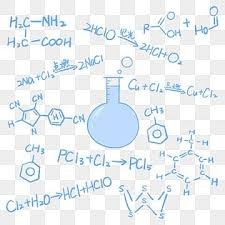Chemistry and Catalysis: Unleashing the Power of Reactions
Welcome to our website, where we explore the dynamic relationship between chemistry and catalysis. Catalysis is a fundamental process that accelerates chemical reactions by providing an alternative reaction pathway, making reactions more efficient and sustainable. Join us as we delve into the fascinating world of chemistry and catalysis, uncovering the principles, applications, and impact they have on various industries.

- What is Catalysis? Catalysis involves the use of catalysts to speed up chemical reactions without being consumed in the process. Catalysts lower the activation energy required for reactions to occur, increasing reaction rates and enabling desired transformations. They play a crucial role in industrial processes, energy production, and environmental sustainability.
- Types of Catalysts: Catalysts can be classified into various types, including homogeneous catalysts, heterogeneous catalysts, and enzymatic catalysts. Homogeneous catalysts are in the same phase as the reactants, while heterogeneous catalysts are in a different phase. Enzymatic catalysts are biological catalysts that facilitate reactions in living organisms.
- Industrial Applications: Catalysis is widely used in industrial processes to produce a vast range of chemicals and materials. It is crucial in the production of fuels, such as gasoline, diesel, and hydrogen. Catalysis is also instrumental in the synthesis of polymers, pharmaceuticals, and fine chemicals. It enables more sustainable processes, including the conversion of biomass and the reduction of harmful emissions.
- Environmental Impact: Catalysis plays a pivotal role in mitigating the environmental impact of various industries. It enables cleaner energy production, such as catalytic converters in vehicles that reduce harmful emissions. Catalysis also contributes to waste treatment and the removal of pollutants from air and water. Sustainable catalytic processes aim to minimize resource consumption and waste generation.
- Energy and Fuel Cells: Chemistry and catalysis are essential in the development of energy storage and conversion technologies. Catalytic reactions are key in fuel cells, which convert chemical energy into electrical energy. They enable the efficient conversion of hydrogen, methanol, and other fuels into electricity, with water as the only byproduct.
- Renewable Energy: Catalysis plays a significant role in renewable energy technologies. It facilitates the conversion of sunlight into chemical energy through artificial photosynthesis. Catalytic reactions are also employed in the production of biofuels from biomass, such as ethanol and biodiesel, providing sustainable alternatives to fossil fuels.
- Future Directions: Chemistry and catalysis continue to drive innovation and research. Scientists are exploring new catalysts, such as nanomaterials and enzymes, and developing novel catalytic processes. The focus is on enhancing selectivity, efficiency, and sustainability, aiming to address global challenges, including climate change, energy transition, and resource scarcity.
At our website, we explore the intricate relationship between chemistry and catalysis, unraveling the principles, applications, and impact they have on various industries and the environment. Join us as we delve into the world of catalysis, from industrial processes to renewable energy and sustainable technologies. Welcome to a place where chemistry unlocks the power of reactions and accelerates progress towards a better future.

